Potřebujeme váš souhlas k využití jednotlivých dat, aby se vám mimo jiné mohly ukazovat informace týkající se vašich zájmů. Souhlas udělíte kliknutím na tlačítko „OK“.
ASTM D7846-12
Standard Practice for Reporting Uniaxial Strength Data and Estimating Weibull Distribution Parameters for Advanced Graphites
Automaticky přeložený název:
Standardní praxe pro Reporting jednoosý Strength dat a odhad Weibullovo rozdělení parametrů pro pokročilou grafity
NORMA vydána dne 1.12.2012
Informace o normě:
Označení normy: ASTM D7846-12
Poznámka: NEPLATNÁ
Datum vydání normy: 1.12.2012
Kód zboží: NS-39182
Počet stran: 8
Přibližná hmotnost: 24 g (0.05 liber)
Země: Americká technická norma
Kategorie: Technické normy ASTM
Kategorie - podobné normy:
Anotace textu normy ASTM D7846-12 :
Keywords:
confidence bounds, graphite, maximum likelihood, strength, unbiasing factors, Weibull characteristic strength, Weibull modulus, Weibull scale, Weibull statistics, ICS Number Code 71.060.10 (Chemical elements), 73.040 (Coals)
Doplňující informace
| Significance and Use | ||||||||||||||||||||
|
5.1 Two- and three-parameter formulations exist for the Weibull distribution. This practice is restricted to the two-parameter formulation. An objective of this practice is to obtain point estimates of the unknown Weibull distribution parameters by using well-defined functions that incorporate the failure data. These functions are referred to as estimators. It is desirable that an estimator be consistent and efficient. In addition, the estimator should produce unique, unbiased estimates of the distribution parameters (6). Different types of estimators exist, including moment estimators, least-squares estimators, and maximum likelihood estimators. This practice details the use of maximum likelihood estimators. 5.2 Tensile and flexural specimens are the most commonly used test configurations for graphite. The observed strength values depend on specimen size and test geometry. Tensile and flexural test specimen failure data for a nearly isotropic graphite 5.3 Many factors affect the estimates of the distribution parameters. The total number of test specimens plays a significant role. Initially, the uncertainty associated with parameter estimates decreases significantly as the number of test specimens increases. However, a point of diminishing returns is reached where the cost of performing additional strength tests may not be justified. This suggests a limit to the number of test specimens for determining Weibull parameters to obtain a desired level of confidence associated with a parameter estimate. The number of specimens needed depends on the precision required in the resulting parameter estimate or in the resulting confidence bounds. Details relating to the computation of confidence bounds (directly related to the precision of the estimate) are presented in 1.1 This practice covers the reporting of uniaxial strength data for graphite and the estimation of probability distribution parameters for both censored and uncensored data. The failure strength of graphite materials is treated as a continuous random variable. Typically, a number of test specimens are failed in accordance with the following standards: Test Methods C565, C651, C695, C749, Practice C781 or Guide D7775. The load at which each specimen fails is recorded. The resulting failure stresses are used to obtain parameter estimates associated with the underlying population distribution. This practice is limited to failure strengths that can be characterized by the two-parameter Weibull distribution. Furthermore, this practice is restricted to test specimens (primarily tensile and flexural) that are primarily subjected to uniaxial stress states. 1.2 Measurements of the strength at failure are taken for various reasons: a comparison of the relative quality of two materials, the prediction of the probability of failure for a structure of interest, or to establish limit loads in an application. This practice provides a procedure for estimating the distribution parameters that are needed for estimating load limits for a particular level of probability of failure. |
||||||||||||||||||||
| 2. Referenced Documents | ||||||||||||||||||||
|
Podobné normy:
Historická
15.9.2013
Historická
15.6.2009
Historická
1.11.2013
Historická
1.11.2013
Historická
1.4.2008
Historická
15.12.2008
Odebírejte informace o nově vydaných normách ZDARMA:
Chcete pravidelně odebírat informace o nově vycházejících normách z celého světa a to zcela zdarma?
Přihlašte se k odběru. Vše je velice jednoduché a absolutně ZDARMA.
Na výběr máte vydavatele z celého světa.


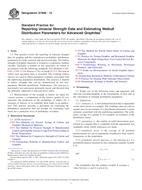
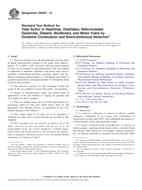 ASTM D6920-13
ASTM D6920-13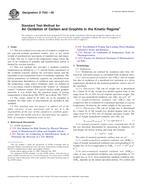 ASTM D7542-09
ASTM D7542-09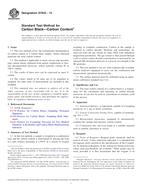 ASTM D7633-13
ASTM D7633-13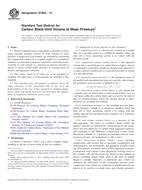 ASTM D7854-13
ASTM D7854-13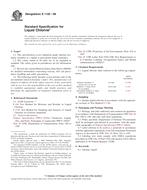 ASTM E1120-08
ASTM E1120-08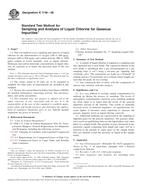 ASTM E1746-08
ASTM E1746-08
 Cookies
Cookies
